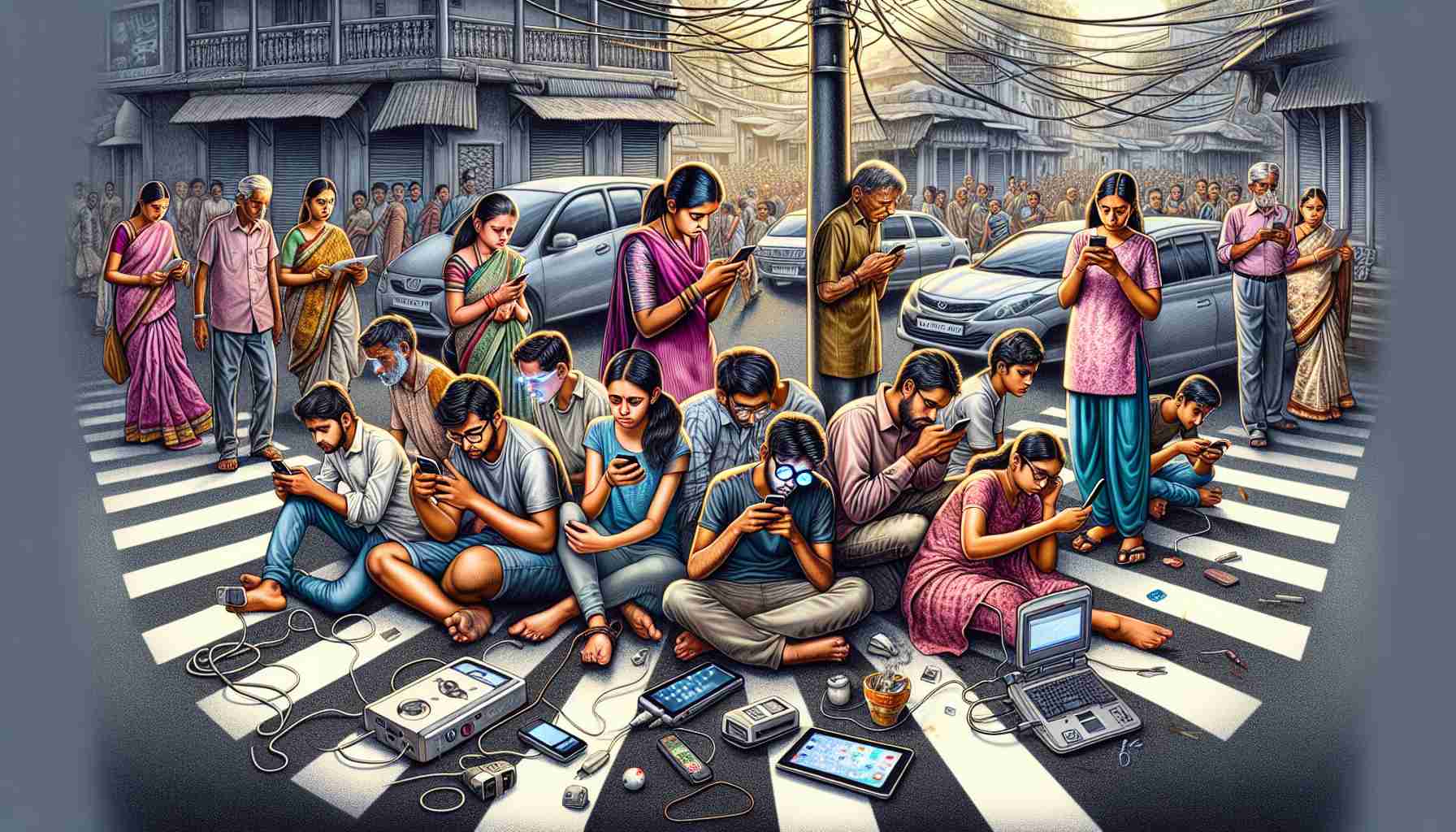India’s burgeoning young population encounters an unforeseen challenge amidst technological advances: a sharp increase in myopia cases. This trend, accelerated by prolonged exposure to digital screens, has raised alarms amongst eye care professionals across the nation.
Experts acknowledge that shortsightedness (myopia) is no longer a minor issue, as it has rapidly evolved into a public health concern. The shift towards a lifestyle saturated with smartphone and computer screen usage has significant ramifications, especially for children. Staying indoors and engaging in close-up activities such as reading and using electronic gadgets are identified as primary contributing factors, alongside genetic predispositions.
Given the escalating scenario, health professionals stress the importance of vigilant monitoring and intervention. Employing technological solutions like specialized eyewear and medicinal eyedrops have shown promise in arresting the progression of myopia. However, these methods are most effective when combined with lifestyle changes, for instance: reducing screen time and increasing outdoor play in natural sunlight.
Concerns were heightened due to the COVID-19 pandemic, which necessitated a surge in online learning and thus, increased screen exposure. The rise in myopia has been connected not only to the quantity but also the type of light exposure. Screens emit blue light, which is high-energy and more harmful to children’s eyes than adults’. Excessive blue light can lead to eyestrain and potentially serious conditions like macular degeneration.
Eye care specialists urge the importance of early detection and consistent check-ups for children. Simple measures such as properly prescribed eyewear can be critical. Additionally, focusing on outdoor activities and monitoring screen usage can help combat the myopic epidemic.
Alarmingly, research suggests that if current trends continue, the prevalence of myopia could impact over half the child population by 2050. With such stakes, a collective effort is required to advocate for sufficient eye care and adopt preventive lifestyles to protect future generations’ vision.
Important Questions and Their Answers:
Q: Why has there been a sharp increase in myopia cases among India’s youth?
A: The sharp increase in myopia cases is largely attributed to lifestyle changes, such as increased use of smartphones, tablets, and computers, leading to prolonged exposure to digital screens. Additionally, habits such as staying indoors and engaging in close-up activities contribute to the rise, along with genetic factors.
Q: What are the key challenges in addressing the myopia epidemic in India?
A: The key challenges include raising awareness about the impact of excessive screen time, ensuring access to regular eye check-ups, especially in rural and underserved areas, and promoting outdoor activities among the youth. Overcoming socioeconomic barriers that limit access to proper eyewear and eye care services is also a significant obstacle.
Key Challenges or Controversies:
– Accessibility to Eye Care: Many regions in India may lack sufficient resources and access to eye care professionals, making it difficult to combat the rise in myopia effectively.
– Educational Demands: The increasing reliance on digital platforms for education can conflict with the need to reduce screen time.
– Socioeconomic Factors: There may be disparities in addressing myopia based on economic status, as not everyone can afford regular eye check-ups or quality eyewear.
Advantages and Disadvantages:
Advantages:
– Technological Solutions: Access to specialized eyewear and medicinal drops can help manage and potentially slow down the progression of myopia.
– Educational Opportunities: Technology has expanded the horizon for education, enabling learning and resource sharing like never before.
Disadvantages:
– Increased Health Risks: Prolonged screen exposure can lead to eye strain, myopia, and potentially more serious conditions like macular degeneration.
– Social and Behavioral Changes: Excessive screen time can influence the social development and physical activity levels of children, potentially leading to a sedentary lifestyle.
Suggested related links include:
– World Health Organization (WHO): For information on global health concerns, including eye health and the effects of digital screens on vision.
– American Academy of Ophthalmology (AAO): For professional insights into eye health, including myopia in children and prevention strategies.
– Prevent Blindness: An organization dedicated to preventing blindness and preserving sight, offering resources on eye health and myopia.
– The International Agency for the Prevention of Blindness (IAPB): For global initiatives and cooperation in addressing preventable blindness and visual impairment, including myopia.
